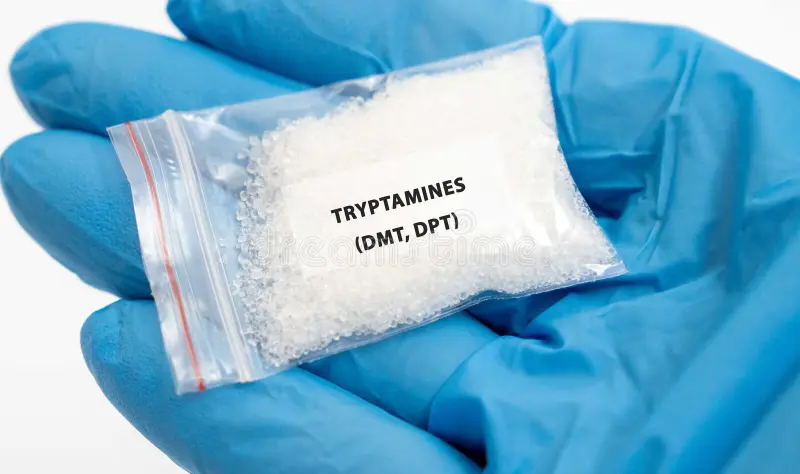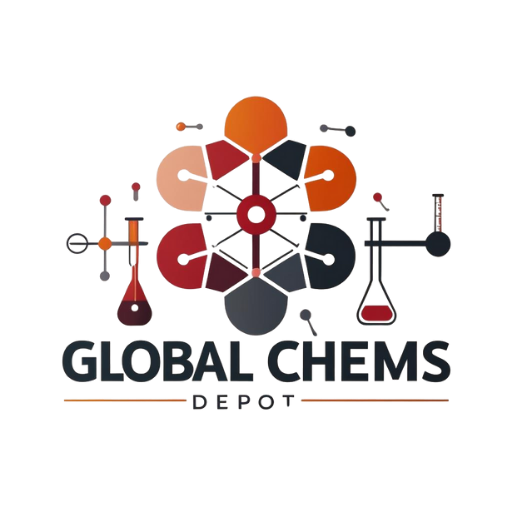Don't miss our holiday offer - up to 50% OFF!
Synthetic Tryptamines and Psychoactive Dissociative Research Chemicals: A Scientific Overview
In laboratories worldwide, synthetic tryptamine research chemicals and psychoactive dissociative research chemicals have become subjects of intense study. These compounds challenge analytical chemists, forensic scientists, and policy makers to understand their unique structures, receptor activity, and public-health implications.
Disclaimer: This article is for informational and educational purposes only. Nothing here promotes human consumption or medical use.

What Are Synthetic Tryptamines?
Tryptamines are a family of indole-based compounds derived from the amino acid tryptophan. The synthetic versions are laboratory-created analogues that share the same core but feature chemical substitutions on the nitrogen or ring positions. Synthetic tryptamine research chemicals for laboratory analysis
Notable subgroups include:
- 4-HO (4-hydroxy) derivatives – e.g., 4-HO-MET, 4-HO-MiPT
- 4-AcO (4-acetoxy) esters – e.g., 4-AcO-DMT, 4-AcO-MET
- Novel N-substituted analogs – variations with methyl, ethyl, or cyclopropyl groups
These modifications alter binding affinities and metabolic pathways, making synthetic tryptamine research chemicals valuable tools for analytical reference and neurochemical investigations.
Psychoactive Dissociative Research Chemicals
Parallel to the tryptamine class are psychoactive dissociative research chemicals—notably the arylcyclohexylamines (e.g., 3-Me-PCP, MXE analogues). Psychoactive dissociative research chemicals NMDA receptor antagonists
These compounds primarily act as NMDA receptor antagonists, and their laboratory significance includes:
- Forensic detection – calibrating GC-MS and LC-MS instruments to identify emerging dissociatives.
- Neurochemical exploration – mapping how NMDA receptor antagonism influences neural signaling.
- Public-health monitoring – tracking the appearance of new psychoactive substances in seized materials.

Why Scientists Study These Compounds
Research motivations extend well beyond curiosity:
- Forensic Toxicology – Laboratories need certified reference standards to detect substances in biological samples and seized materials.
- Analytical Chemistry Development – Novel compounds help researchers improve separation techniques, optimize chromatography columns, and validate mass-spectrometric methods.
- Neuroscience and Pharmacology – Controlled in-vitro studies of receptor binding shed light on neurochemical pathways relevant to mood, perception, and cognition.
These applications underscore why synthetic tryptamines and dissociative research chemicals remain active areas of academic investigation. Novel tryptamine derivatives for forensic toxicology
Historical Context
The study of tryptamines traces back to the mid-20th century when chemists like Albert Hofmann and Alexander Shulgin synthesized and cataloged dozens of indole derivatives.
Dissociatives such as phencyclidine (PCP) and ketamine emerged from medical research into anesthetics.
Today, their modern analogues are encountered in forensic casework, prompting a need for up-to-date reference standards and rapid analytical methods. Indole-based synthetic tryptamine compounds for chemical analysis
Analytical Techniques
To accurately identify these substances, scientists rely on a suite of techniques:
- Gas Chromatography–Mass Spectrometry (GC-MS) – Separates and identifies volatile compounds with high sensitivity.
- Liquid Chromatography–Mass Spectrometry (LC-MS/MS) – Ideal for polar or thermally labile molecules.
- Nuclear Magnetic Resonance (NMR) – Confirms molecular structure.
- Infrared and Ultraviolet Spectroscopy – Provides complementary data on functional groups.
By integrating synthetic tryptamine research chemicals reference standards, laboratories can calibrate instruments, validate methods, and maintain regulatory compliance.
Regulatory and Ethical Considerations
Because many of these compounds occupy legal gray areas, researchers must prioritize compliance:
- Controlled-Substance Laws: Regulations differ by country; some analogues may be scheduled or controlled under “analogue acts.”
- Institutional Safety Protocols: Universities and private labs must maintain proper documentation, secure storage, and restricted access.
- Ethical Oversight: Any human or animal experimentation requires strict ethical approvals—though most research is purely analytical.

Future Outlook
The chemical landscape continues to evolve. Each year, forensic labs report dozens of new psychoactive substances (NPS). synthetic tryptamine research chemicals and dissociatives remain at the forefront, requiring:
- Rapid Analytical Adaptation – New compounds often evade traditional drug screens.
- International Data Sharing – Agencies share findings through systems like the UNODC’s Early Warning Advisory.
- Open Scientific Dialogue – Transparent communication among chemists, policy makers, and healthcare professionals to manage public-health risks.
Conclusion
Synthetic tryptamines and psychoactive dissociative research chemicals occupy a dynamic intersection of chemistry, neuroscience, and forensic science.
From GC-MS calibration to forensic toxicology, their study drives advances in analytical methods and public-health policy.

[…] Substances (NPS) are synthetic compounds designed to replicate or modify the effects of established psychoactive drugs. They often appear faster than regulations can adapt, which is why researchers and forensic teams […]